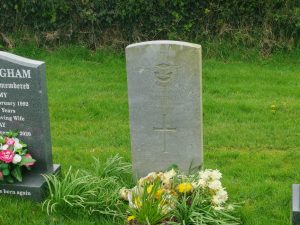Bittles, G H (George Henry)

Major George Henry Bittles lived on Adelaide Avenue in Coleraine and was the husband of Annie Elizabeth Patton of Garvagh, County Londonderry. They had married on the 10th of February 1896 at St’ Georges Church, Dublin.
George had retired from the army during 1913, only to be called up again shortly after the beginning of the Great War in 1914. His previous service included 20 years in India, first with the Royal Horse Artillery and then the Indian Army Ordnance Department and service in the South African Second Boer War where he was involved in the Siege of Ladysmith.
During the Boer war,[1] George took part in the two sieges of Ladysmith.[2] The last one lasted from the 14th until the 27th of February 1900, with the British winning and the Boers abandoning their siege. The relieving forces entered Ladysmith on the 1st of March 1900. Accompanying them was a certain Winston Churchill.[3] George then returned to the UK.
Major George Henry Bittles unfortunately died of cancer at the Cottage Hospital, Portrush during 1916. He was naturally accorded a military funeral and after his last service in St. Patricks Church Coleraine he had a Firing Party and Pipers attend it from the 3rd Battalion of the Royal Inniskilling Fusiliers. They also accompanied his coffin to Coleraine Cemetery. His son, Flight Sub-Lieutenant George Henry Bittles[4] attended along with Colonel Moore-Irwin of Carrickfergus, who represented the army. Local people paid their respects along the entire route of the procession.
George was awarded the King Edward Volunteer Long Service Medal and the Kings South African Badge with clasp for the defence of Ladysmith.
Date of Death: 21/09/1916 (Aged 58)
Service: Major, Indian Ordnance Department
Service Number:
Burial Location: Section D. Grave 472.
[1] The Second Boer War in South African, started on 11th October 1899 and ended on 31st May 1902.
[2] Ladysmith is a small town in South Africa.
[3] Winston Churchill was the Prime Minister during the 2nd World War and between 1951–1955.
[4] Flight Sub-Lieutenant George Henry Bittles served with the Royal Navy Air Service as a pilot. Henry would transfer to Royal Airforce during 1918 and would survive the war.







